Dropshipping is a ecommerce business model where you sell products without actually stocking inventory. Instead, you act as a middleman between suppliers and customers. When you receive an order, you purchase the item from your supplier and have it shipped directly to the customer.
Identifying trending and in-demand products to sell is crucial for dropshipping success. This is where Google Trends comes in - it's an invaluable tool for product research.
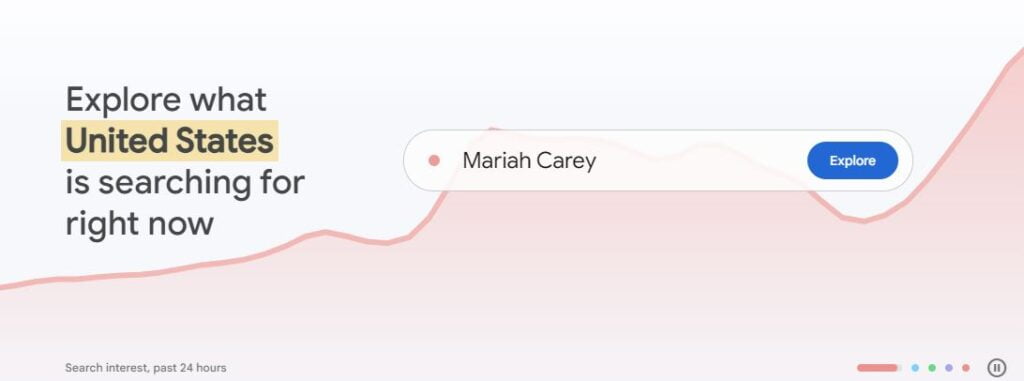
First, what is Dropshipping Exactly?
Dropshipping is a retail fulfillment method where you sell products without actually keeping inventory. Instead, you partner with a supplier or manufacturer that stores the items and ships them directly to customers when you receive orders.
For example, your ecommerce store sells fitness apparel but you don't physically stock any shirts or leggings. When a customer buys a yoga top on your site, you forward the order details to your dropshipping partner. They package and ship the top on your behalf so it appears as if you sourced it directly.
Benefits of Dropshipping
Dropshipping offers several advantages that make it attractive for launching an online retail business:
- Lower startup costs - No need to invest in product inventory upfront
- Easy to start - Can be setup quickly with just supplier partnerships
- Location flexibility - Manage the business from anywhere with an internet connection
- Wider product selection - Can sell a vast array of items through multiple suppliers
- Scalability - Easy to expand into more products as you grow
Potential Downsides
However, dropshipping also comes with some disadvantages to consider:
- Lower profit margins - Competition can drive down prices across suppliers
- Lack of quality control - Cannot directly verify product quality
- Inventory inconsistencies - Stock outs risks if not monitored properly
- Branding limitations - Reliant on supplier branding rather than unique brand
- Shipping complexities - Managing multiple supplier logistics takes work
Overall, dropshipping provides an accessible business model for entrepreneurs to launch an ecommerce store without major investment. But maintaining supplier relationships and providing excellent customer service remains vital.
Now, what is Google Trends?
Google Trends is an invaluable free tool for marketers and researchers that reveals insightful data on search interest over time. It allows you to analyze the popularity of keywords, topics, and specific search queries across regions.
With Google Trends, you can:
- Track search volume trends for keywords over custom time periods dating back to 2004. See which terms are rising or declining in popularity.
- Compare search prevalence between multiple keywords side-by-side. Discover which topics within your niche have the highest search demand.
- Segment data by country and city to identify location-specific trends. Use this for local SEO/marketing optimization.
- Analyze top related searches to find new keyword opportunities or expand research into related subjects.
- Filter by category to zero in on trends within focused industries like automotive, beauty, tech, etc.
- See top charts highlighting trending search topics overall, by category, and by location. Quickly spot emerging trends.
- Access real-time search data from the past 7 days to view the very latest trends.
- Download full datasets as CSV files for further analysis and integration with other tools.
The insightful consumer behavior data from Google Trends enables data-driven decisions around product/service demand, SEO/SEM keyword targeting, ad bidding, and content marketing angles leveraging emerging trends.
With its comprehensive datasets and powerful filtering options, Google Trends contains a wealth of instantly accessible research to inform strategic marketing. The metrics distill down consumerinterests and intent - intelligence that gives brands a competitive advantage.
Notable Features of Google Trends
Google Trends Compare Feature
The compare feature allows you to analyze multiple search terms side-by-side. Contrast popularity over custom time periods to see which topics are rising or declining.
Comparisons help identify winning keywords and high-potential search interests to focus marketing efforts on.

Comparing Regional Search Interest
Google Trends can break down keyword popularity by country, state, and city. See where certain search terms overindex regionally.
Location data enables localizing marketing campaigns around geographic differences in consumer interests.
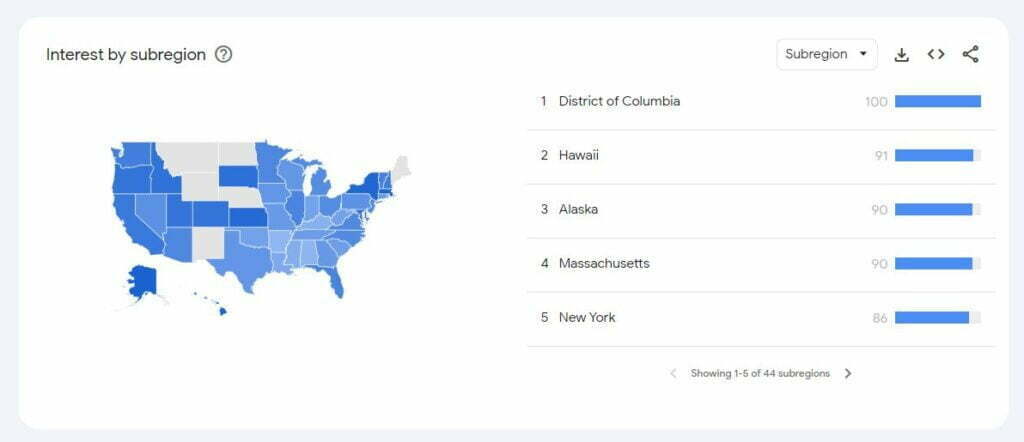
Related Topics and Rising Searches
Scroll below the graph to see top related queries and fast trending searches. This reveals associative keywords and expanding trends to diversify marketing angles.
Download related keywords in CSV format for ongoing analysis.
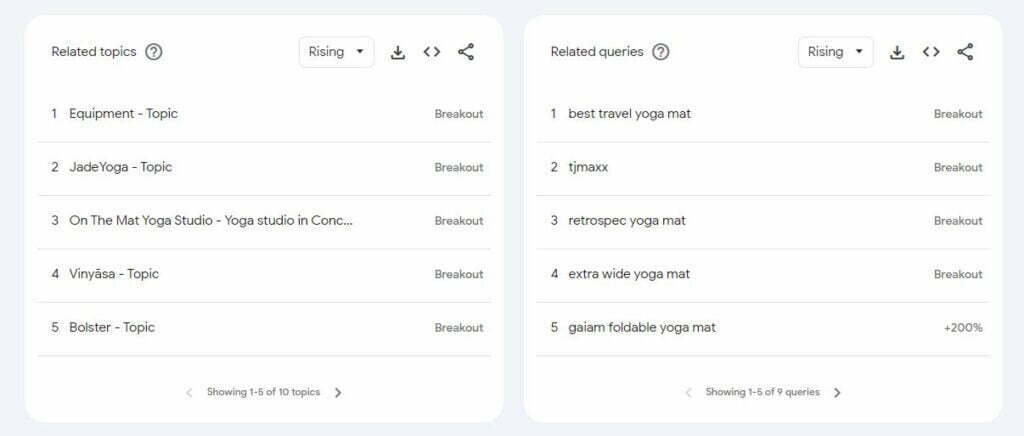
Demographic Filtering
Google Trends provides filters to segment data:
- Country - Analyze individual countries of interest
- Timeframe - Compare across custom multi-year periods
- Categories - Isolate trends within industries/verticals
- Search type - Web, image, news, YouTube, shopping
- Advanced - Filter by gender, age group, geographic radius
Segmenting by demographics produces targeted insights to optimize personalization and resonate with specific audiences.
Why Google Trends Is Invaluable for Dropshipping Product Research
Google Trends should be a foundational resource for dropshippers to identify winning products aligned with demand. Here's why it's so impactful:
Validating Product Ideas
Dropshippers can input potential product keywords into Google Trends to view search popularity and demand over time. High and rising search volumes validate a profitable product idea.
Quantifying Market Size
The search interest metrics from Google Trends reveal the approximate market size for a given product based on global or location-specific search activity. Higher search volumes signal larger markets.
Spotting Trends
Ongoing monitoring of product keywords can detect rising trends weeks or months before they go mainstream. Acting early allows capitalizing on growth.
Informing Inventory
Hot products in Google Trends may experience demand surges. Analyzing trends prevents dead stock by forecasting inventory needs.
Optimizing Marketing
You can optimize marketing content and ads around trending topics and the most in-demand keyword variations and locations.
Identifying Seasonality
Notice seasonality patterns for certain products to align inventory and marketing with recurring demand at specific times annually.
Expanding Product Lines
Related queries reveal adjacent niche products to branch into and additional keywords to target.
In essence, Google Trends equips dropship ecommerce stores with actionable data to identify and react to consumer demand signals in a way traditional retailers cannot.
Why Use Google Trends for Dropshipping?
Google Trends offers unique benefits for dropshippers:
- See search popularity of products over time - Spot rising trends before competitors
- Find seasonal spikes for specific products - Capitalize on holiday demand
- Identify trends by country/region - Select locally popular products
- Compare product search interest - Gauge differences in demand
- Analyze related queries - Uncover ancillary product opportunities
The data from Google Trends allows you to recognize high-potential winning products aligned with customer demand. This takes the guesswork out of product selection.
You can instantly validate profitable products and minimize risk of dead inventory by acting on search trends and consumer behavior insights. Google Trends helps fuel data-driven decisions to maximize sales.
How to Use Google Trends for Dropshipping Product Research
Google Trends should be a key part of your product research process when dropshipping. Follow this step-by-step guide to harness Google Trends data:
Step 1 - Identify Broad Niches
Start by brainstorming broad niches and categories to explore like fitness, pets, beauty, etc. This gives focus to your research.
Step 2 - Dig Into Specific Product Searches
Search for specific product keywords within those niches like "yoga mat", "dog toys", or "facial cleanser".
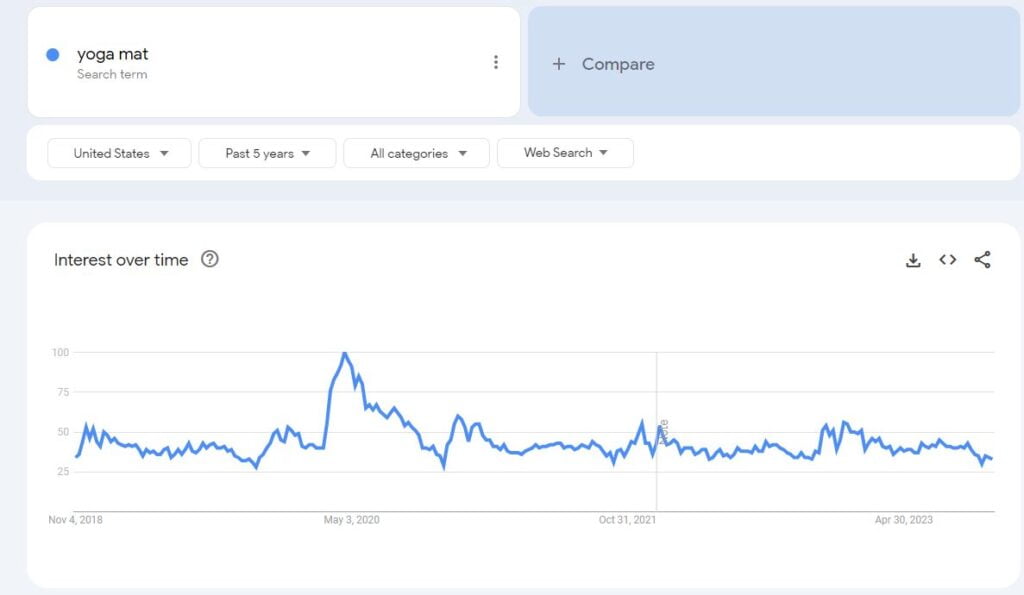
Step 3 - Analyze Search Volume Over Time
Analyze the interest over time graph for product keywords. Look for rising or volatile trends that may indicate opportunities.
Step 4 - Compare Product Search Popularity
Use the comparison feature to gauge search demand for product variations like different yoga products.
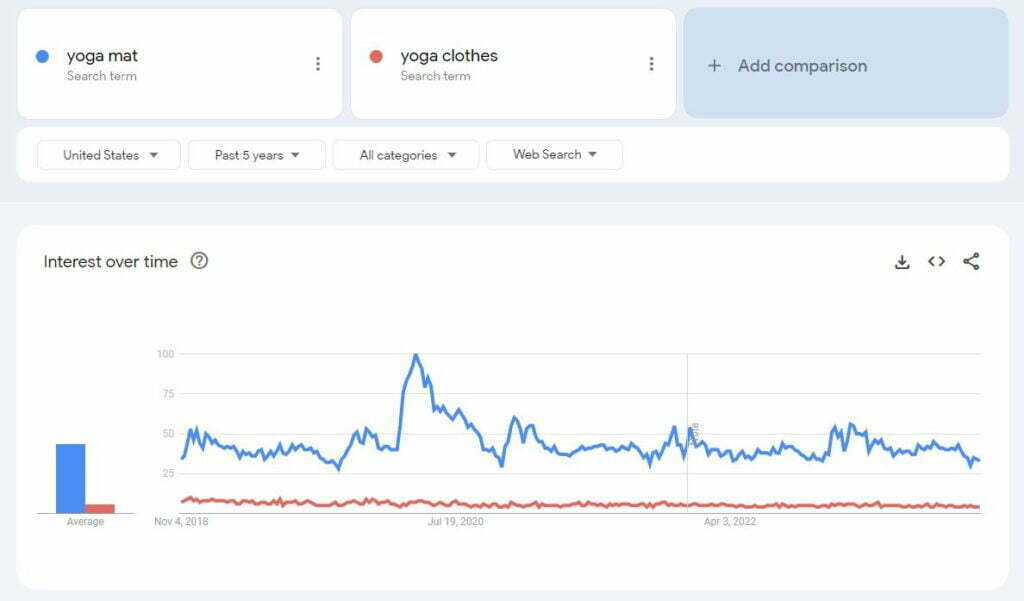
Step 5 - Filter by Location
Filter results by country and region to see geographic differences for products. Use this to select locally popular items.
Step 6 - Leverage Related Queries
Scroll down on results to see other top related searches. Uncover ancillary product opportunities to expand your offerings.
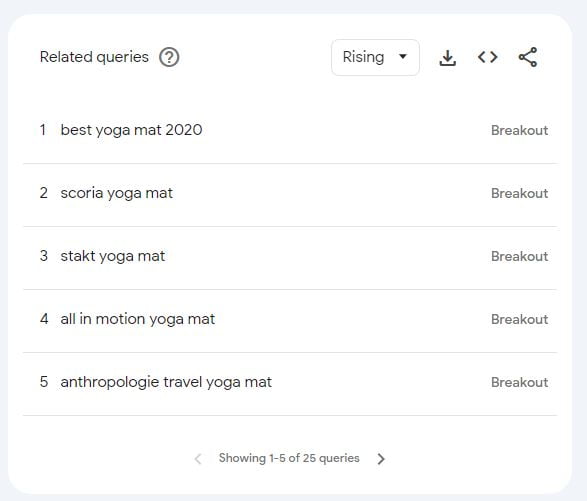
Step 7 - Identify Seasonal Trends
Notice spikes for seasonal events like holidays to target limited-run products aligned with them.
Step 8 - Search Google to Validate
Validate surging trends in Google Trends through standard Google searches to confirm rising interest.
Step 9 - Contact Me For Validation
Feel free to reach out to me with questions if your product would be a good fit. I can use some of my advanced SEO tools to help determine the amount of competition.
Step 9 - Order Samples and Test
Order product samples to try out quality before listing items discovered based on Google Trends data.
By leveraging Google Trends insights in your product selection process, you can build a dropshipping catalog aligned with customer demand - the key to sales and growth.
Tips for Using Google Trends for Dropshipping
Google Trends reveals products gaining momentum and searches over time. Look for:
- Keywords steadily climbing week-over-week
- Sudden viral spikes in search volume
- Searches with high volumes but low competition
Monitor for trending products that align with your brand. The higher the search popularity and growth, the better dropshipping opportunity.
1. Create Content Aligned with Current Demand
One of the most powerful applications of Google Trends for dropshipping is crafting content capitalizing on trending topics and consumer demand.
Creating Content Tied to Trending Products
Frequently browse current rising trends to create content like blog posts and social media updates focused on trending products. Publish content rapidly to attract searchers.
Optimizing Content for Trending Keywords
Look at top related searches for ideas on specific keyword variations and long-tail searches gaining traction to optimize content for.
Planning Holiday/Seasonal Content
Analyze search spikes around events like holidays to create content and promotions leveraging temporary demand for seasonal products. But avoid low-demand seasons.
Expanding Content Ideas
Use the related terms and topics feature to uncover peripheral products and keywords to branch content out to more areas.
Monitoring Competitors
See what rising product terms competitors rank for. Produce content focused on high-potential topics competitors overlook.
Capitalizing quickly on trends with agile, data-backed content tailored exactly to current consumer demand gives dropshipping stores an edge. Google Trends reveals what potential customers are searching for at that moment.
2. Consider Evergreen Products
While capitalizing on trends, also select evergreen products with steady, sustained popularity over years. Items like yoga pants or phone chargers have longevity.
3. Increase Reach on YouTube and Google Shopping
Google Trends presents opportunities to create video content and product offerings aligned with rising search demand on YouTube and Google Shopping.
Optimizing YouTube Videos
Enter a topic into Google Trends and switch to the YouTube filter. Analyze related and rising searches people are using to find videos. Target these keywords to expand reach.
Study top-ranking video styles and formats around trending topics. Emulate what resonates for higher engagement and rankings.
Identifying Product Opportunities
Filter Google Trends by Google Shopping. View the most popular rising product searches. Cross-reference with your ecommerce store to identify related products to potentially add.
See which categories and products spike seasonally or around events to capitalize on temporary surges in demand.
Monitoring Competitor Product Offerings
Research the types of trending products top competitors are listing on Google Shopping. Find untapped opportunities in thriving areas.
Optimizing Product Deliverability
Assess geographic demand differences in Google Trends to ensure your inventory and logistics enable delivering in-demand products to high search volume regions.
In summary, harness Google Trends to align your YouTube and shopping content with timely viewer and consumer intent for increased reach, sales, and success.
4. Leveraging Google Trends Data to Enhance SEO Strategies
Google Trends presents invaluable opportunities to improve SEO through aligning optimization efforts with timely search trends and consumer interests.
Identifying Rising Keyword Opportunities
New keyword ideas can be uncovered based on rapidly rising searches related to your niche. Target these terms early before competition increases.
Optimizing Content Planning
See seasonal topic fluctuations and trends to create content that ranks well at specific high-demand times annually.
Avoiding Temporary Trend Keywords
Review keyword popularity over years to avoid targeting temporary fads prone to fast decline. Focus SEO on sustained trends.
Monitoring Rankings
Use Google Trends' interest metrics to correlate ranking changes for core keywords - are they rising and falling with search popularity?
Analyzing Competitor Trends
Research if competitors are successfully targeting rising keywords early and capitalizing on new trends.
Identifying Problems
Rapid declines in keyword interest could signify issues like a Google algorithm penalty or outdated content in need of refreshing.
Planning Link Building
Discover new websites and influencers in trending areas as potential link-building targets.
With insights from Google Trends, brands can craft data-backed SEO strategies closely aligned with target audience interests and demand. There is immense opportunity to increase rankings by leveraging search trends.
Alternatives to Google Trends
Ubersuggest, ahrefs, and Semrush offer similar keyword demand and trend data. But Google Trends remains the most robust free option for dropshippers.
Final Verdict: Google Trends is an Essential Tool for Dropshipping
Google Trends should be a foundational ingredient in any dropshipper's research process. The wealth of consumer demand and interest data it provides enables thoroughly vetting and validating product selection decisions.
By leveraging Google Trends' insights into rising trends, seasonal fluctuations, geographic differences, and associated keywords, dropshipping stores can reliably build an inventory aligned with what customers are actively seeking. This takes the risk and guesswork out of product choices.
For online sellers without access to traditional retail sales data, Google Trends supplies invaluable visibility into consumer search behavior. Combined with sampling products and monitoring reviews, it's possible to make smart data-backed choices using Google Trends.
We highly recommend integrating Google Trends into your dropshipping product selection workflow. While not a crystal ball, it provides a significant competitive edge through its unique glimpse into customer search intent.
Google Trends Rating: 5/5 Stars for Dropshipping
FAQ
What are the main benefits of Google Trends for dropshipping?
Google Trends reveals rising trends, compares product demand, identifies location differences, and provides related keyword ideas to inform inventory decisions.
Does Google Trends show actual search volumes?
No, the interest metrics are relative and normalized rather than exact numbers. But the data accurately indicates growth, comparisons, and geographic differences.
How often should you check Google Trends?
Ideally monitor weekly for new trends and seasonality patterns. Also check around major holidays for insight into temporary demand shifts.


